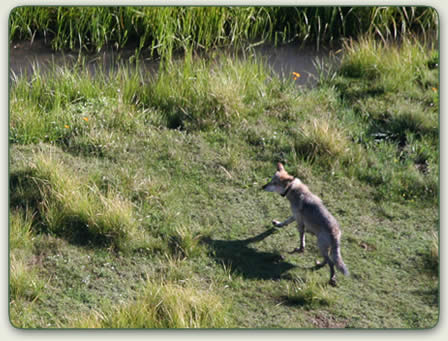29
Jan
Press Release: New Report Shows Too Few Mexican Wolves Released to Boost Population

SILVER CITY, N.M.- Mexican gray wolves in the Southwest continue to struggle
to survive in the wild in part because too few wolves are being released
from captivity, according to the U.S. Fish and Wildlife Service’s 13th
annual progress report released this week. On a more positive note, the
report (which covers 2010) documents few wolf depredations on livestock,
even though the practice of removing wolves from the wild has been
discontinued.
“Releases of captive Mexican wolves into the wild are few and far between,
which is limiting the growth of this important wolf population that suffered
for years from federal wolf trapping and shooting,” said Michael Robinson of
the Center for Biological Diversity. “On the upside, this report shows that
the wolf population can grow – and cows stay safer – if ranchers practice
close herding of their livestock.”
The Mexican Wolf Recovery Program Progress Report records 18 pups born in
the wild in New Mexico and Arizona in 2010, 14 of which lived at least till
the end of the year. Those survivors more than replaced the six wolves found
dead and two adult wolves that went missing that year, accounting for the
growth of the wolf population in 2010 from 42 to 50 animals and making 2010
the first year with a population increase since 2006. The government did not
remove any wolves from the wild in 2010, but released just one wolf,
captured in 2009, back into the wild.
The 1998 reintroduction was projected to result in 102 wolves in the wild by
2006. A current count of the number of Mexican wolves in the wild concludes today,
with the resulting official census for 2011 to be released next week.
The progress report describes efforts to keep wolves and cattle separate,
including through federal funds to hire local range-riders, and says eight
cows were confirmed killed by Mexican wolves in 2010, two were probably
killed by wolves, and three were injured by wolves, out of approximately
47,000 cattle permitted to graze on the national forests comprising the
two-state wolf recovery area. None of the cattle protected by range-riders
were killed. This is a lower number of confirmed fatal depredations than
recorded for the previous five years. Mexican wolves feed primarily on elk.
The progress report states that “lack of appropriate initial releases and
successful translocations from captivity” contributed to “fewer known adult
wolves available for pair formation.” This acknowledgment was accompanied by
a pledge to “replac[e] the individual animals lost through initial releases
and translocations” (p. 29).
Nevertheless, in 2011 the Fish and Wildlife Service released just two wolves
to replace the eight wolves known to have died or gone missing in 2010.
Failure to replace enough lost wolves set the stage for one of those
released wolves to breed with a dog, and later to consort with another dog.
The Fish and Wildlife Service eventually had the wolf shot on Dec. 14, 2011,
further undercutting recovery.
“The Fish and Wildlife Service has failed to release Mexican gray wolves in
the numbers it promised,” said Robinson. “Its painful paralysis in releasing
wolves to the wild contrasts with its unseemly haste last month in
destroying a wolf who, unable to find a mate of her own kind, was drawn to
domestic dogs.”
~~~~
Contact: Michael Robinson,
Center for Biological Diversity
P.O. Box 1727
Silver City, NM 88062
(575) 534-0360
*****
To learn how you can help get more Mexican wolves in the wild where they belong, click here.



